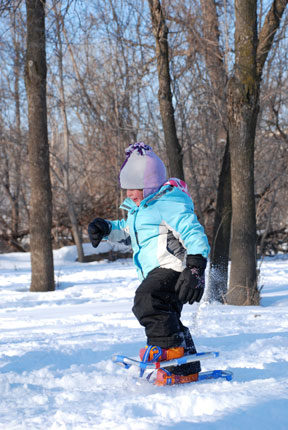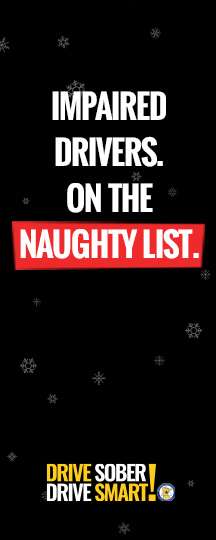It’s Way More Than Play: Why Spending Time Outdoors In Cold Weather Makes You (And The Kids) Healthier
By Deborah Locke, Minnesota Department of Natural Resources Information Officer
Getting the kids or yourself outside on a brisk winter day may seem counterintuitive. Cold air is to be avoided, right? It’s healthier to hibernate.
Consider this. Minnesotans have longer life spans than residents of nearly every other state, and that’s not because they live in warm weather. That may have a lot to do with good health care and widespread insurance coverage, but health writer Dr. Rachel Vreeman suggests more. She has said that cells that fight infection actually increase if you go into the cold.
Researchers with the Centers for Disease Control point out that bacteria and germs in overheated indoor areas merely get recycled. The best way to avoid stale air in the flu season? Go outside. Children need 60 minutes of daily exercise and for kids, winter is the right place to do it. Walking through snow helps with large muscle development in small bodies. Exercise improves sleep cycles, and outdoor winter play teaches children how to play with snow or steer a sled or skate or ski.
But lower temperatures impact more than our physical health. Have you ever seen people return home right after a few hours of outdoor winter activity? They burst in, stomping feet, pulling off heavy coats and boots, and seem, well, uplifted, even happy. That is because exercise boosts your mood. Cold air without the humidity of summer feels stimulating and forces our bodies to work harder to produce heat. Endorphin levels increase, which is the brain chemical that induces a feeling of pleasure.
That pleasure arrives in multiple ways on a chilly winter day at your favorite state park or trail. Just look around. Winter brings its own flavor of awe with the lacy leaf-free tree branches against a clear blue sky, billions of snow diamonds glistening in sunlight, a glimpse of a deer rushing past or a cardinal or wren perched on a tree stump. The park may be quiet and all you hear is the sound of snow crunching as you and your children and friends hike a trail, or you may encounter a dozen fellow park visitors, all in good spirits, all collecting their daily dose of Vitamin D from the sun.
To find your nearby state park, go to mndnr.gov/parkfinder. Minnesota state parks and trails offer a broad range of winter activities, from snowshoe hikes to ice fishing lessons to treasure hunts to beautiful candlelit walks that light the world upward from the ground. For a listing of park events, go to www.mndnr.gov/parks. For candlelight events, see www.mndnr.gov/candlelight.
Staff at the Mayo Clinic offer advice on how to safely exercise outdoors. Tips include these:
- Avoid extreme cold (defined as “0” degrees F or below). Check the forecast before heading outdoors.
- Dress in layers. Exercise generates body heat, and after an hour of cross-country skiing, you may need to take off a layer of clothing. Start with a synthetic material, followed by fleece or wool, and then a waterproof outer layer. Wear shoes or boots that can accommodate heavy thermal socks.
- At night wear reflective clothing. Wear sunscreen that blocks UVA and UVB sun rays, and lip balm with sunscreen.
- Drink fluids before, during and after a winter workout.
Safety tips for children from the American Academy of Pediatrics include setting time limits on time spent outdoors and calling children inside at times to warm up. Avoid extreme cold, and dress them in layers. They should wear an extra layer of clothing than an adult. Ensure that there is no ice where they play.
Even very short breaks outside are beneficial and give a boost. Take a short walk outside on your lunch break, or gather the children after school and walk around the block. Cabin fever will reduce and good feeling will increase. Snowshoes and skis can be rented or checked out at some parks. Call in advance to confirm the availability of equipment and to reserve what you will need. For more ideas on what to do at Minnesota state parks and trails this winter, pick up a copy of the new winter Programs and Events brochure at the nearest state park or request one from the DNR Information Center (info.dnr@state.mn.us or call 651-296-6157 or 888-646-6367).
















